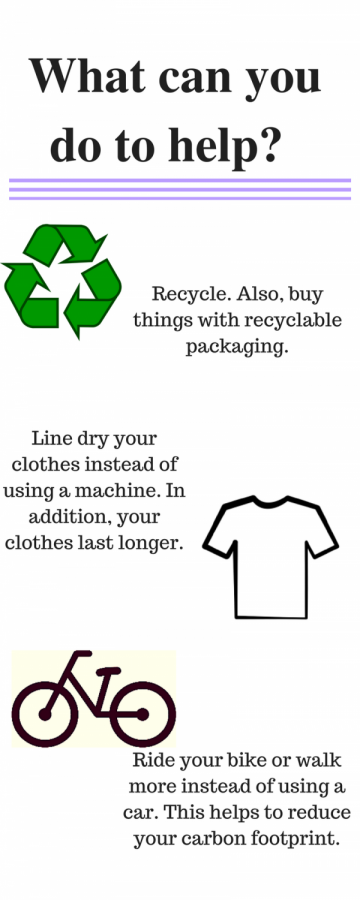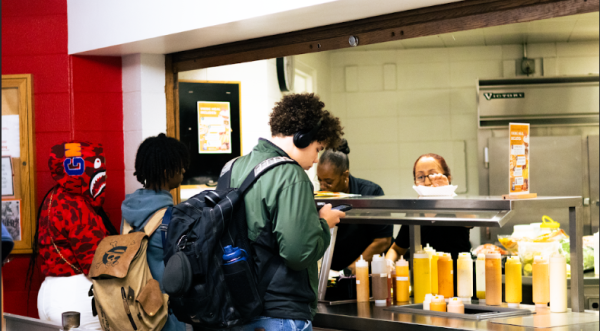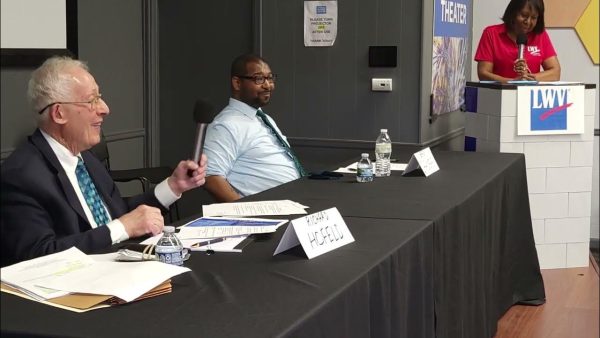Are we headed for disaster?
Humans are contributing to natural disasters
If you’ve noticed something particularly different with the weather lately then you may be wondering what’s been going on.
There have been 15 separate weather and climate disaster events that caused at least $1 billion in damages just in the U.S. alone this, according to the National Centers for Environmental Information.
The threat of natural disasters has been rising in the past few years but 2017 has been particularly filled with them, especially hurricanes.
Hurricane Harvey, which struck Rockport and Houston, Texas, and surrounding areas in late August, caused great damage and is estimated to cost $190 billion in damages.
Hurricane Maria, which hit southeastern Puerto Rico, left millions without power and many displaced. With the death toll still rising and many hospitals not functioning, the hurricane has left many in a crisis even two months after the storm first hit.
Environmental Science Teacher Gina Slusinski said that humans do play a part in how hurricanes occur, though they may not realize it.
“More and more frequent and violent hurricanes have been taking place recently due to global climate change (aka global warming). Human activities do contribute to this. These include burning of fossil fuels, clearing forests and other large patches of vegetation,” Slusinski said.
Carbon dioxide is a greenhouse gas that naturally warms the atmosphere and the burning of fossil fuels produces more of it. When forests are cleared the consumers of carbon dioxide, trees, are not there, resulting in it staying in the atmosphere. All of this can lead to hurricanes.
Hurricanes and other natural disasters affect more people than some think, even outside the area that is devastated.
Economics Teacher Nick Anello said that natural disasters such as hurricanes can put pressure on consumers even years later.
When Hurricane Irma hit Florida, orange crops were greatly affected. Oranges are the nation’s biggest source of fruit. Statewide, it is estimated that the damage to Florida’s orange trees is about 70 percent, according to the Washington Post. This leads to increase in the price of oranges nationwide.
“It takes time to replant orange trees and a few years for them to actually sprout,” Anello said. “The price goes upwards so that puts pressure on the consumers to pay either the higher price of Florida oranges or buy more foreign oranges, which are going to increase that price more as well.”
The fact that the rate of natural disasters has so much increased lately and have affected so many people does not surprise Senior Camela Moore. Moore is an AP Environmental Science student and a member of the Environmental Vikings Club.
“We have treated the environment so terribly throughout the past few decades. I think we are going to have more natural disasters, like hurricanes, and they will get more intense,” Moore said.
Moore also said that students need to be informed about how to help stop the destruction of the environment.
“Turn of your lights, recycle, do all the stuff they tell you to do. Take it as more of a priority,” she said. “Now it’s past the point of saying ‘you can help.’ We need to put our hands in science and think it out.”
In addition to recycling, reducing your carbon footprint, waste, and energy usage, there are many other things you can do to help with the movement to slow down climate change.
“If you are passionate, write letters to your Congressman or Senator, a handwritten or typed physical letter carries more weight than you would think,” Science Teacher Stephen Banasiak said.






